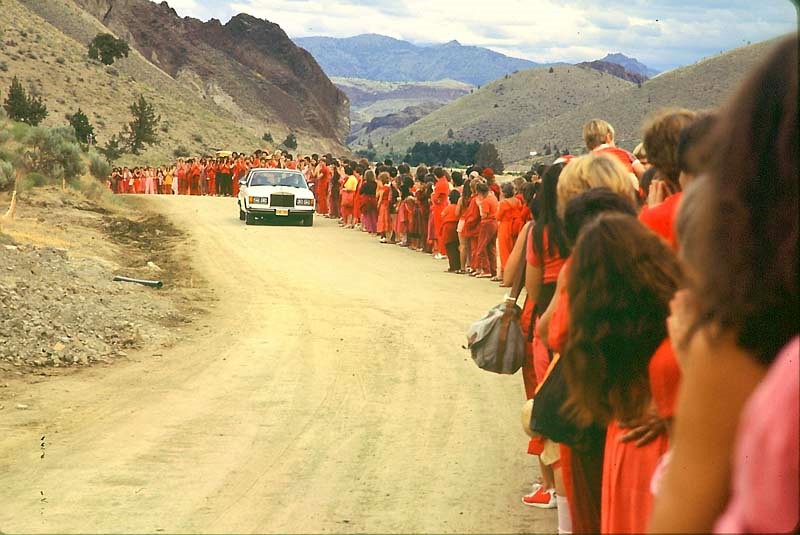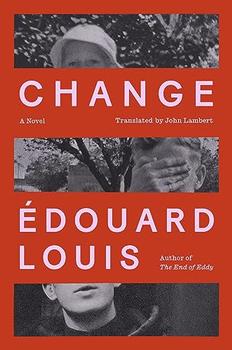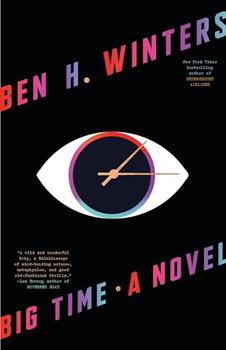Summary | Excerpt | Reading Guide | Reviews | Beyond the Book | Read-Alikes | Genres & Themes | Author Bio

Critics' Opinion:
Readers' Opinion:
First Published:
Jan 2021, 240 pages
Paperback:
Mar 2022, 240 pages
 Book Reviewed by:
Book Reviewed by:
Daniela Schofield
Buy This Book
This article relates to Burnt Sugar
 Bhagwan Shree Rajneesh, also known as Osho, was born on December 11, 1931 in Kuchwada, India as Chandra Mohan Jain. He was given the name Rajneesh, meaning "god of night," at six months. He took an interest in religion from a young age and eventually found work as a philosophy instructor, but in 1966 resigned from his position at the University of Jabalpur to become a guru and teach meditation. In the early 1970s, he began to induct followers into the order of sannyasis, Hindus who renounce wealth and possessions. However, while sannyasis are traditionally associated with ascetic practices and strict self-discipline, Rajneesh encouraged his followers to enjoy worldly pleasures, without being attached to material goods. In 1971, he took on the title "Bhagwan," a Hindu word meaning "lord" used as a term of address for gurus. (The "Shree" in his name is an Indian word denoting wealth and prosperity that is commonly used as an honorific.) He propagated a practice that he termed "dynamic meditation," designed to connect individuals with the divine. In doing so, he cultivated an international following, becoming a beloved spiritual leader to some and a reviled cult figurehead to others.
Bhagwan Shree Rajneesh, also known as Osho, was born on December 11, 1931 in Kuchwada, India as Chandra Mohan Jain. He was given the name Rajneesh, meaning "god of night," at six months. He took an interest in religion from a young age and eventually found work as a philosophy instructor, but in 1966 resigned from his position at the University of Jabalpur to become a guru and teach meditation. In the early 1970s, he began to induct followers into the order of sannyasis, Hindus who renounce wealth and possessions. However, while sannyasis are traditionally associated with ascetic practices and strict self-discipline, Rajneesh encouraged his followers to enjoy worldly pleasures, without being attached to material goods. In 1971, he took on the title "Bhagwan," a Hindu word meaning "lord" used as a term of address for gurus. (The "Shree" in his name is an Indian word denoting wealth and prosperity that is commonly used as an honorific.) He propagated a practice that he termed "dynamic meditation," designed to connect individuals with the divine. In doing so, he cultivated an international following, becoming a beloved spiritual leader to some and a reviled cult figurehead to others.
In 1974, Rajneesh established a headquarters at an ashram in Pune (pronounced POO-nuh, a city in western India about 90 miles southeast of Mumbai). Here, he offered dynamic meditation along with New Age healing underpinned by a liberal approach to sexuality. He styled his teachings with a blend of Western philosophy, Eastern mysticism and, perhaps most notoriously, free love. This eclectic spiritual cocktail held appeal for Indians and foreigners alike. People began to flock to the ashram in Pune and clad themselves in the characteristic orange garments of his followers. Adherents often abandoned their entire lives to relocate to Pune, sometimes bringing their children with them.
By the end of the decade, Rajneesh's movement had grown and he was involved in legal disputes for a variety of reasons, including unpaid taxes. In 1981, he relocated his base to a derelict ranch in eastern Oregon in the United States. The movement's location was incorporated as a city named Rajneeshpuram, which aspired to be a utopian, self-sufficient commune. While outwardly Rajneesh's message to his followers was to live peacefully and in harmony with one another and their natural surroundings, there was a dark side to the operations of Rajneeshpuram. The leader and those close to him kept a tight rein on the members of the commune, who were sometimes forced to donate significant amounts of money. As Rajneesh and his advisors continued to seek control over Rajneeshpuram and the surrounding community, they resorted to increasingly drastic means.
In one incident, followers were incited to poison people by scattering bacteria on salad bars in the Oregon city of The Dalles in a bid to influence county-level elections. Although nobody perished, the event resulted in the poisoning of 751 people, 45 of whom had to be hospitalized, and remains the largest bioterror attack in American history. The resulting widespread illness was initially blamed on bad restaurant hygiene. Authorities later discovered the truth in an investigation of the commune, but only after Rajneesh and his associates had fled because their movement had come under scrutiny for a number of suspected crimes including arson, drug smuggling, voter fraud and attempted murder. The tensions between Rajneeshpuram and the local Oregonians, many of whom came to view the commune as a cult, are explored in the 2018 Netflix docuseries Wild Wild Country.
Rajneesh was deported from the US in 1985 after pleading guilty to immigration fraud. Upon his return to Pune, his ashram continued to attract followers. Shortly before his death, in 1989, Rajneesh began going by the name Osho. After he died in 1990, his followers continued to subscribe to his teachings and his movement endured. The original ashram in Pune has been maintained and expanded and is now known as the Osho International Meditation Resort. There are additional Osho meditation centers practicing his teachings in over 50 countries.
Followers lined up as Rajneesh drives by in Rajneeshpuram in the summer of 1982. © 2003 Samvado Gunnar Kossatz
Filed under People, Eras & Events
![]() This "beyond the book article" relates to Burnt Sugar. It originally ran in March 2021 and has been updated for the
March 2022 paperback edition.
Go to magazine.
This "beyond the book article" relates to Burnt Sugar. It originally ran in March 2021 and has been updated for the
March 2022 paperback edition.
Go to magazine.





The Funeral Cryer by Wenyan Lu
Debut novelist Wenyan Lu brings us this witty yet profound story about one woman's midlife reawakening in contemporary rural China.
Your guide toexceptional books
BookBrowse seeks out and recommends the best in contemporary fiction and nonfiction—books that not only engage and entertain but also deepen our understanding of ourselves and the world around us.